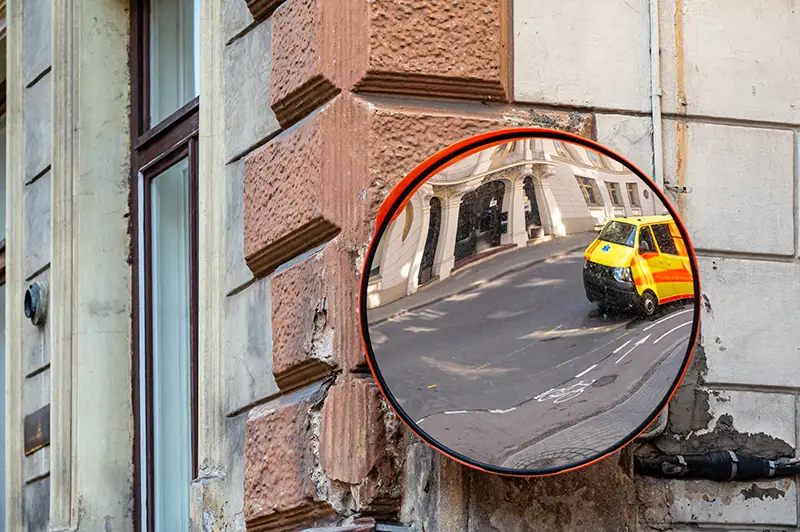Click here to get this post in PDF
Road safety is an essential aspect of modern living, vital for the protection of drivers, passengers, and pedestrians alike. With the increasing number of vehicles on the road, the challenge of maintaining safety standards is ever-growing. However, by implementing a range of measures, from technological innovations to basic road safety practices, we can significantly enhance health and safety on our roadways. Among these measures, the use of traffic mirrors) plays a crucial role in improving visibility and reducing accidents.
1. Enhanced Road Engineering
One of the primary ways to improve road safety is through better road engineering. This involves designing roads that naturally lead to safer driving. Features such as well-placed signage, adequate lighting, and proper lane markings are essential. Additionally, the implementation of speed bumps and rumble strips in accident-prone areas can significantly reduce speed-related accidents.
2. Use of Traffic Mirrors
Traffic mirrors are an often underestimated yet highly effective safety tool. Placed at strategic locations such as sharp bends, blind spots, and junctions, these mirrors provide drivers with a broader and clearer view of oncoming traffic, pedestrians, and potential hazards. This improved visibility is crucial for making informed decisions, especially in areas where the line of sight is naturally limited.
3. Regular Road Maintenance
Regular maintenance of road surfaces is critical in preventing accidents. Potholes, uneven surfaces, and eroded markings can lead to dangerous driving conditions. Ensuring that these issues are promptly addressed not only improves the lifespan of the roadways but also significantly enhances safety for all road users.
4. Promoting Safe Driving Practices
Educating drivers on safe driving practices is a fundamental component of road safety. Campaigns focusing on the dangers of speeding, driving under the influence, and distracted driving can play a pivotal role in changing driver behaviour. Furthermore, enforcing laws related to seatbelt use, helmet use for motorcyclists, and child safety seats is equally important.
5. Technology Integration
Advancements in technology offer new avenues for enhancing road safety. The use of surveillance cameras and automatic speed limit enforcement can deter risky driving behaviours. Additionally, modern cars equipped with advanced safety features such as automatic braking systems, lane departure warnings, and blind-spot detection significantly contribute to reducing accidents.
6. Emergency Response Preparedness
Rapid and efficient emergency response is crucial in minimizing the impact of road accidents. This includes having a well-coordinated system involving ambulance services, police, and traffic management teams. Regular training and drills for these teams ensure they are prepared to handle various road emergency scenarios.
7. Involving the Community
Community involvement is key in road safety initiatives. Encouraging local communities to participate in road safety campaigns and providing platforms for reporting road hazards can foster a more proactive approach to safety. Community-driven programs such as neighbourhood watch schemes can also play a role in monitoring and reporting risky driving behaviours.
8. Pedestrian and Cyclist Safety
Special attention should be given to the safety of pedestrians and cyclists. This includes creating dedicated pedestrian crossings and cycling lanes and ensuring these areas are well-lit and marked. Additionally, raising awareness among drivers about the rights of pedestrians and cyclists is critical in reducing accidents involving these vulnerable road users.
9. Data-Driven Safety Measures
Utilizing data to identify high-risk areas and times for accidents allows for targeted interventions. This data-driven approach ensures that resources are efficiently used where they are most needed, leading to a more effective overall road safety strategy.
Improving health and safety on roadways requires a multifaceted approach. From the implementation of traffic mirrors to enhance visibility to the integration of technology and community involvement, each element plays a vital role in creating safer roads. By prioritizing these measures, we can work towards a future where road accidents are significantly reduced, making our journeys safer for everyone.
You may also like:
The Hidden Cost of Neglecting Construction Worker Well-Being
Businesses – Present Solutions Not Surprises with Employee Driving Safety Tips
Image source: elements.envato.com

